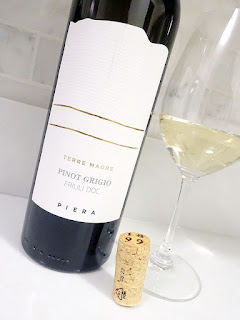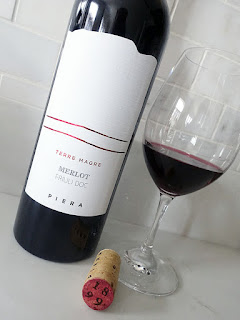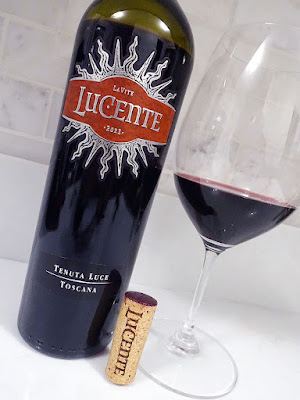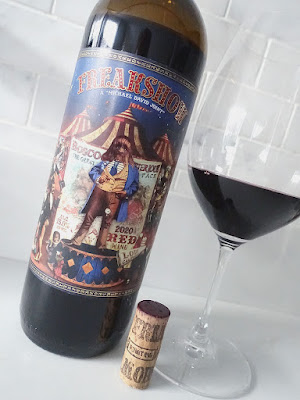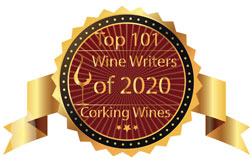After enjoying the beautiful 2016 Château Maucoil Privilège Châteauneuf-du-Pape a few years ago, tonight's red wine review is the latest edition of this terrific, certified organic red wine that arrived at the LCBO last month in the LCBO VINTAGES New Release Collection on December 16th - with plenty of bottles still available for purchase.
It is produced by Château Maucoil, an historic property that is situated in an area of Châteauneuf-du-Pape that has been occupied since Roman times when they set up a base for Caesar's legions. The Château Maucoil estate and castle was built in 1624 and inherited by Joseph de La Pise, Lord of Maucoil and archivist of the House of Orange-Nassau (the Dutch royal family). Winegrowing has been an intrinsic part of the property since the 17th century, with Château Maucoil possessing some of Châteauneuf-du-Pape's oldest vines, some of which are over 100 years old.
Château Maucoil has changed hands many times over the years, with a series of illustrious families taking over the reins to develop the estate and establish its reputation. Most recently, in late 2022, Château Maucoil was acquired by Bernard Duseigneur from Groupe Maucoil Lavau, which was owned jointly by the (65%) Lavau and (35%) Bonnet families.
Today, Château Maucoil has 45 hectares of vines in the Châteauneuf-du-Pape appellation, all of which have been tended to organically since 2011. With the estate's privileged situation and unique terroir, the vines are allowed to grow at pace with care, precision, and patience. The soils are worked in the traditional method, without any chemical weed killers, while preferring the use of ancient methods such as furrowing, forming mounds, and ploughing. The vineyards are tended to with maximum respect for the people and the environment.
This cuvée marks a return to the traditions of Châteauneuf-du-Pape by using the original 13 grape varieties that were permitted within the AOC (in 2009 the list of permitted grape varieties was expanded). It is crafted with 50% Grenache, 15% Syrah, 12% Mourvèdre, 8% Cinsault, Clairette, 5% Bourboulenc, Vaccarèse, Muscardin, Counoise, Terret, Roussanne, Picpoul, and Picardan. All the grapes were hand-harvested from a plot of old vines that were planted on sand and large rounded stones. After meticulously sorting the grapes, it was vinified using traditional methods and represents a return to the origins of winemaking by co-fermenting the grapes and ageing for 18 months in larger demi-muids. It was then aged for several years in bottle prior to release.
The 2020 growing season in the Southern Rhône began with a mild winter, followed by a hot and dry summer, with slightly cooler nights, which led to wines with good freshness and balance. Conditions during harvest were ideal, resulting in a stress-free vintage with solid yields. Since 2020 lacked lengthier periods of extreme heat, Grenache took its time to ripen. Fortunately, some light rain arrived towards the end of September, and by early October all Grenache grapes were harvested. There is some variance in the quality of wines from 2020 Châteauneuf-du-Pape, but overall, the wines are harmonious, fresh, balanced, and engaging, with more delicate tannins and lower alcohol levels, and offer immediate drinkability.
It is also interesting that the 2016 I enjoyed in November 2020 retailed for $86, while this vintage is priced at more than 25% less, an unusual surprise in these highly inflationary times, although the ownership change may have been a factor. Let's see how this organic 2020 Châteauneuf-du-Pape is tasting tonight...
Certified organic and a blend of 50% Grenache, 15% Syrah, 12% Mourvèdre, 8% Cinsault, Clairette, 5% Bourboulenc, Vaccarèse, Muscardin, Counoise, Terret, Roussanne, Picpoul, and Picardan. The highly aromatic nose is deep and complex with aromas of ripe, dark red & black fruits, black cherry, black raspberry, blackberry, stony mineral, garrigue, white pepper spice, kirsch, and smoke. On the dry, medium-full to full-bodied palate it is ripe, harmonious, gently spicy, and warming, but within balance, with lovely savoury, stony, black-blue fruits, peppery spice, garrigue, and meaty flavours with touches of violet. Acids are crisp, juicy, and succulent, while the ripe tannins are smooth and refined with good structure. Stony, smoky, meaty, and peppery spice notes linger on the finish, with excellent length. Provides immense pleasure now, and will continue to do so over the next 10+ years. Highly recommended buy! Score: 94 pts
Other fine wines by Château Maucoil can be ordered through their Agent - Connexion Oenophilia / Noble Estates Wines & Spirits.
It is produced by Château Maucoil, an historic property that is situated in an area of Châteauneuf-du-Pape that has been occupied since Roman times when they set up a base for Caesar's legions. The Château Maucoil estate and castle was built in 1624 and inherited by Joseph de La Pise, Lord of Maucoil and archivist of the House of Orange-Nassau (the Dutch royal family). Winegrowing has been an intrinsic part of the property since the 17th century, with Château Maucoil possessing some of Châteauneuf-du-Pape's oldest vines, some of which are over 100 years old.
Château Maucoil has changed hands many times over the years, with a series of illustrious families taking over the reins to develop the estate and establish its reputation. Most recently, in late 2022, Château Maucoil was acquired by Bernard Duseigneur from Groupe Maucoil Lavau, which was owned jointly by the (65%) Lavau and (35%) Bonnet families.
Today, Château Maucoil has 45 hectares of vines in the Châteauneuf-du-Pape appellation, all of which have been tended to organically since 2011. With the estate's privileged situation and unique terroir, the vines are allowed to grow at pace with care, precision, and patience. The soils are worked in the traditional method, without any chemical weed killers, while preferring the use of ancient methods such as furrowing, forming mounds, and ploughing. The vineyards are tended to with maximum respect for the people and the environment.
This cuvée marks a return to the traditions of Châteauneuf-du-Pape by using the original 13 grape varieties that were permitted within the AOC (in 2009 the list of permitted grape varieties was expanded). It is crafted with 50% Grenache, 15% Syrah, 12% Mourvèdre, 8% Cinsault, Clairette, 5% Bourboulenc, Vaccarèse, Muscardin, Counoise, Terret, Roussanne, Picpoul, and Picardan. All the grapes were hand-harvested from a plot of old vines that were planted on sand and large rounded stones. After meticulously sorting the grapes, it was vinified using traditional methods and represents a return to the origins of winemaking by co-fermenting the grapes and ageing for 18 months in larger demi-muids. It was then aged for several years in bottle prior to release.
The 2020 growing season in the Southern Rhône began with a mild winter, followed by a hot and dry summer, with slightly cooler nights, which led to wines with good freshness and balance. Conditions during harvest were ideal, resulting in a stress-free vintage with solid yields. Since 2020 lacked lengthier periods of extreme heat, Grenache took its time to ripen. Fortunately, some light rain arrived towards the end of September, and by early October all Grenache grapes were harvested. There is some variance in the quality of wines from 2020 Châteauneuf-du-Pape, but overall, the wines are harmonious, fresh, balanced, and engaging, with more delicate tannins and lower alcohol levels, and offer immediate drinkability.
It is also interesting that the 2016 I enjoyed in November 2020 retailed for $86, while this vintage is priced at more than 25% less, an unusual surprise in these highly inflationary times, although the ownership change may have been a factor. Let's see how this organic 2020 Châteauneuf-du-Pape is tasting tonight...
Tasting Note:
CHÂTEAU MAUCOIL PRIVILÈGE CHÂTEAUNEUF-DU-PAPE 2020 - AC, Rhône, France (#16210) (XD) - $62.95Certified organic and a blend of 50% Grenache, 15% Syrah, 12% Mourvèdre, 8% Cinsault, Clairette, 5% Bourboulenc, Vaccarèse, Muscardin, Counoise, Terret, Roussanne, Picpoul, and Picardan. The highly aromatic nose is deep and complex with aromas of ripe, dark red & black fruits, black cherry, black raspberry, blackberry, stony mineral, garrigue, white pepper spice, kirsch, and smoke. On the dry, medium-full to full-bodied palate it is ripe, harmonious, gently spicy, and warming, but within balance, with lovely savoury, stony, black-blue fruits, peppery spice, garrigue, and meaty flavours with touches of violet. Acids are crisp, juicy, and succulent, while the ripe tannins are smooth and refined with good structure. Stony, smoky, meaty, and peppery spice notes linger on the finish, with excellent length. Provides immense pleasure now, and will continue to do so over the next 10+ years. Highly recommended buy! Score: 94 pts
Other fine wines by Château Maucoil can be ordered through their Agent - Connexion Oenophilia / Noble Estates Wines & Spirits.









